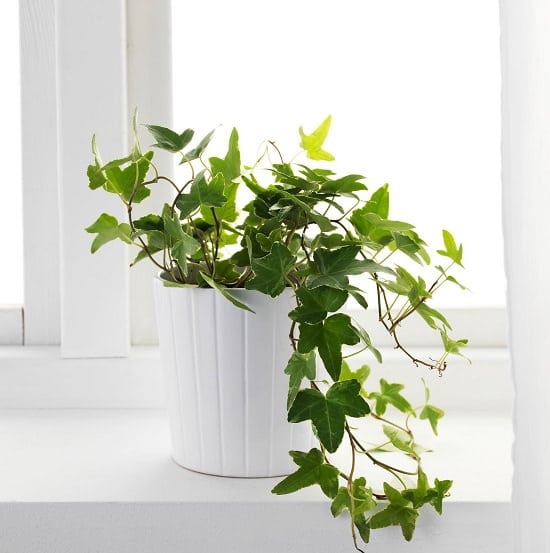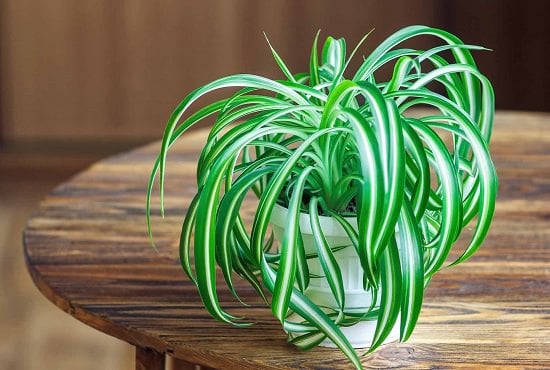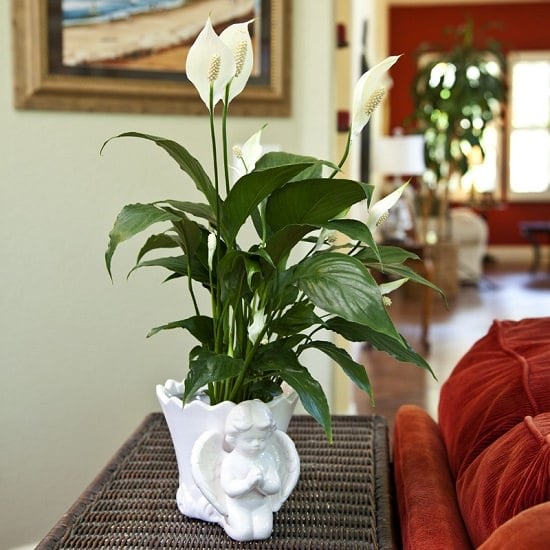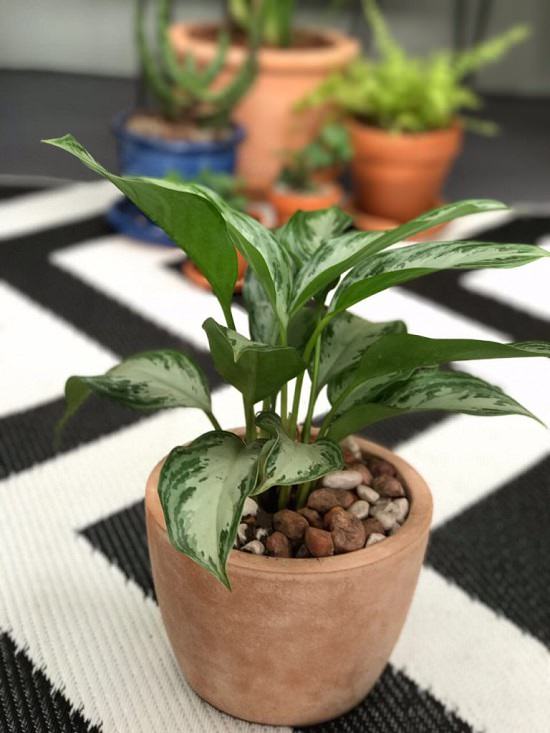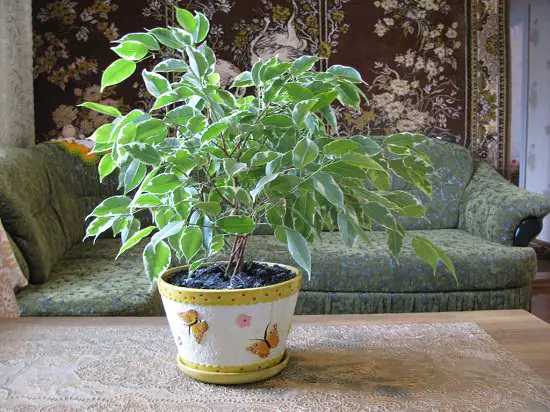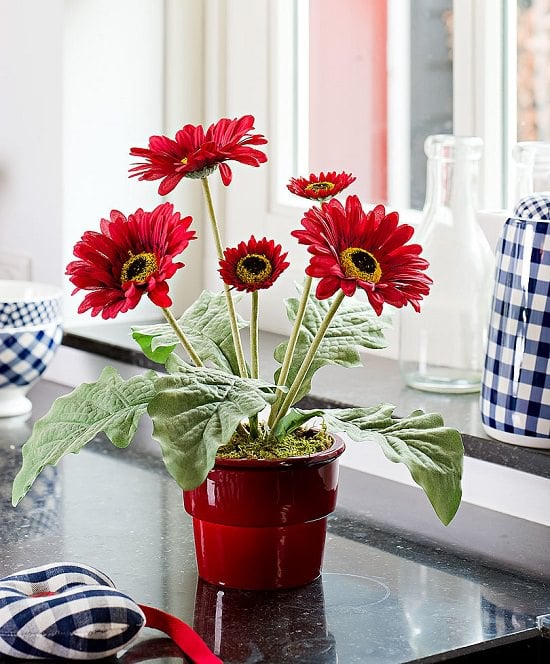As air pollution has become a major issue, it is important to have plants at home. Here’s some Indoor Plants Recommended By NASA that you should grow!
We generally think that indoor air is safer than outdoor air, but we are wrong! Synthetic building materials and different organic compounds direct to various health hazards, leading to “sick building syndrome.”
In a study conducted by NASA and Associated Landscape Contractors of America (ALCA) in the year 1989, it was proved that some houseplants naturally remove toxic agents from indoor air. Here are some of the best Indoor Plants Recommended By NASA that you must consider growing!
Indoor Plants Recommended By NASA
1. English Ivy
Botanical Name: Hedera helix
English ivy is an evergreen perennial vine and is a super climber. It is useful for cleansing benzene and toluene. One research also indicated that English ivy could also reduce mold in the home.
2. Spider Plant
Botanical Name: Chlorophytum comosum
With spiderettes growing out from the mother plant, it makes it appear as baby spiders are dangling down from the pot! The Spider Plant is also useful in removing carbon monoxide, formaldehyde, xylene, and toluene.
To learn more about fantastic spider plant benefits, click here!
3. Peace Lily
Botanical Name: Spathiphyllum
Peace lilies are amazing houseplants with big white bracts and glossy green leaves. They are easy to maintain and clean indoor air from xylene, benzene, formaldehyde, ammonia, and toluene.
Check out the proven benefits of Peace Lily here!
4. Chinese Evergreen
Botanical Name: Aglaonema modestum
Even if you lack a green thumb, you will find growing Chinese evergreen super easy. Benzene and formaldehyde are toxic gases that it devours from the air.
Check out the list of plants that remove formaldehyde here!
5. Bamboo Palm

Botanical Name: Chamaedorea seifrizii
Among the many palm plants, the bamboo palm is most suited for low light conditions. It tops the list of Indoor Plants Recommended By NASA for filtering benzene and trichloroethylene.
6. Weeping Fig
Botanical Name: Ficus benjamina
The Weeping fig is one of the most popular indoor trees, cleaning out the pollutants from the air like formaldehyde and trichloroethylene. The research showed that the plant was capable of cleaning 80% of the formaldehyde within 4 hours.
Check out different ficus varieties to grow indoors here!
7. Barberton Daisy
Botanical Name: Gerbera jamesonii
Barberton or Gerbera daisies are famous for producing large, bright, and colorful flowers. They remove chemical vapors of benzene, exposure to which is linked with leukemia.
To learn more about Barberton Daisy’s care, click here!
8. Red-Edged Dracaena
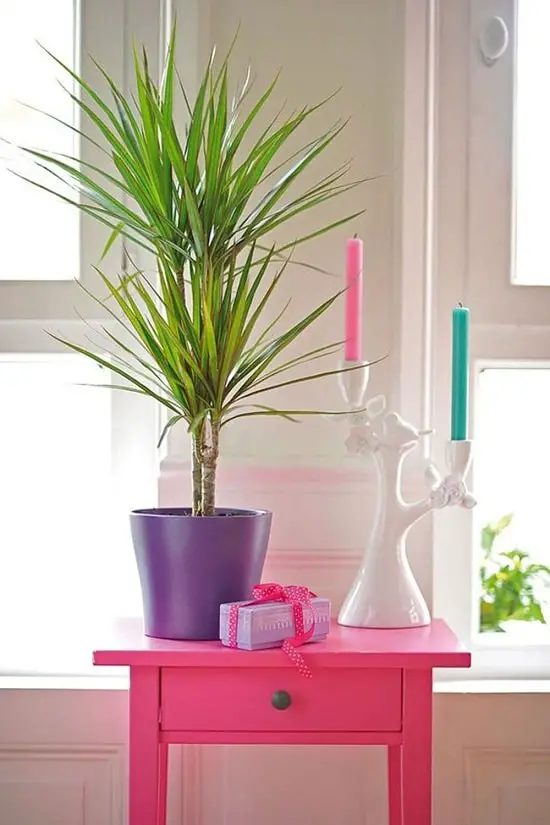
Botanical Name: Dracaena marginata
This easy-to-grow plant produces green sword-shaped leaves with red edges. Dracaena marginata is capable of removing pollutants like formaldehyde, benzene, trichloroethylene, and carbon dioxide.
Check out more benefits of Dracaena here!
9. Elephant Ear Philodendron
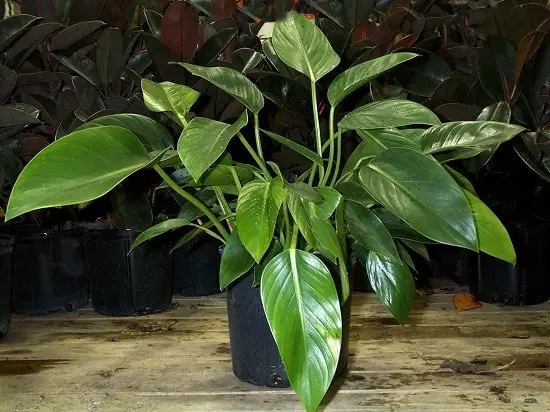
Botanical Name: Philodendron domesticum
With big, elephant ear-like leaves, this Philodendron plant makes quite a statement. It is a low-light houseplant, thriving well in the shade and ideal for removing formaldehyde and airborne allergens, according to the famous NASA clean air study.
To learn more about big leaves plants you can grow indoors, click here!
10. Chrysanthemum

Botanical Name: Chrysanthemum indicum
Chrysanthemums can grow indoors if you’ve got a sunny windowsill. These fall-flowering garden plants are capable of eliminating toxins like formaldehyde, ammonia, xylene, toluene, benzene, formaldehyde, and trichloroethylene from your home.
11. Aloe Vera
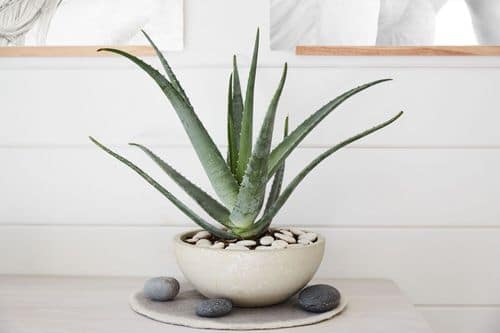
Botanical Name: Aloe barbadensis mill
You must have heard about the many benefits of aloe vera! It is a popular medicinal succulent plant that not only beautifies your interior but also eliminates toxic compounds. In the research conducted by NASA, the plant successfully removed 1555 micrograms of Formaldehyde with a leaf area of 713 in a sealed experimental chamber.
Check out the amazing benefits of the Aloe Vera plant here!
12. Mother in Law’s Tongue
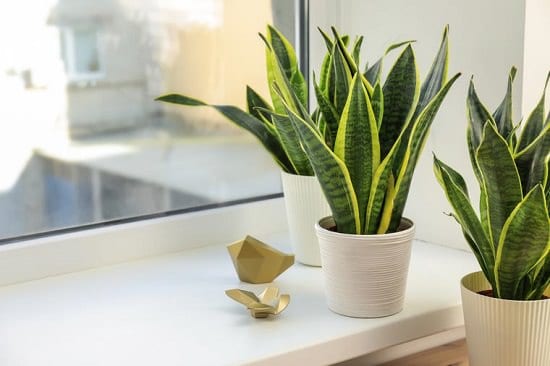
Botanical Name: Sansevieria trifasciata
Sansevieria is one of the best drought-resistant plants that thrive on neglect. According to the NASA Clean Air Study, it removes formaldehyde, benzene, xylene, toluene, and trichloroethylene from indoor air. Learn more about its benefits in detail here.
13. Warneckei
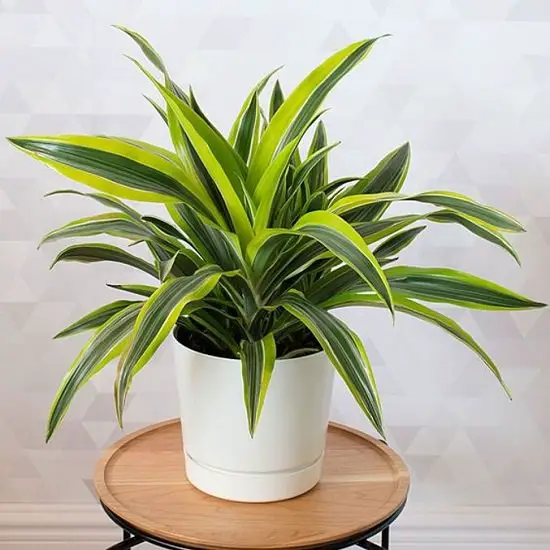
Botanical Name: Dracaena fragrans/deremensis
‘Warneckei’ is a hardy cultivar of Dracaena fragrans. Provide bright indirect sunlight and grow it as a houseplant to eliminate harmful chemical compounds such as benzene, formaldehyde, trichloroethylene from the air. In the tests, Warneckei removed 39107 micrograms of Benzene with a leaf area of 7242.
‘Janet Craig‘ from the same genus has similar air-purifying properties as ‘Warneckei.’
14. Lacy Tree Philodendron
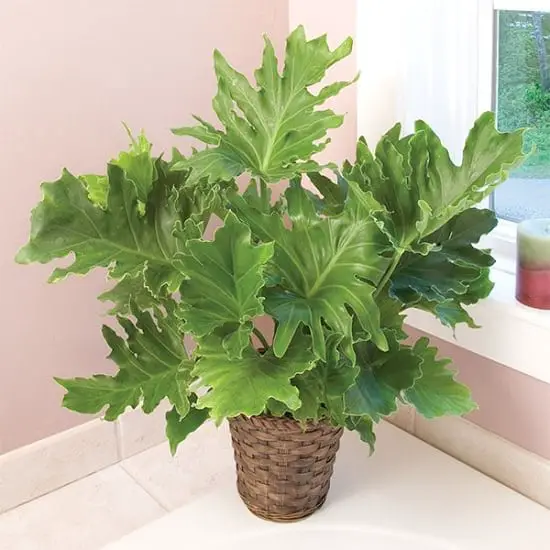
Botanical Name: Philodendron selloum
Lacy tree philodendron has big half-lobed leaves. More than that, it is very effective in removing air pollutants such as formaldehyde. The plant removed 8656 micrograms of Formaldehyde in a sealed chamber during a 24-hour exposure period in the NASA experiments.
15. Golden Pothos
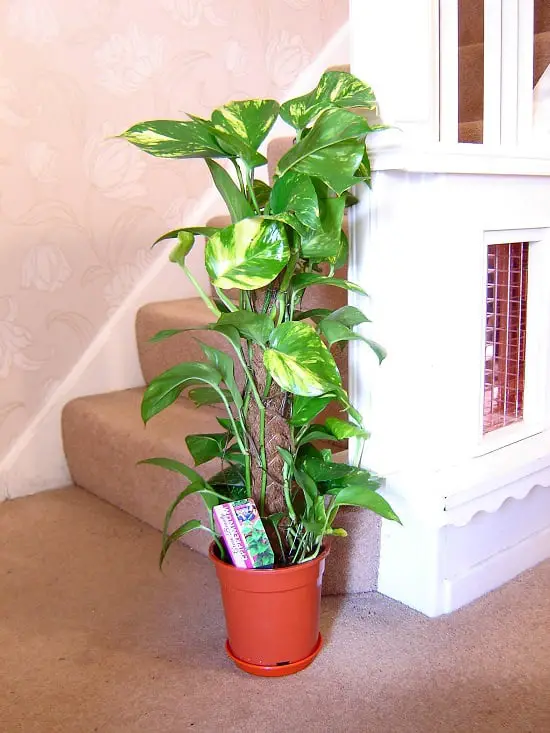
Botanical name: Epipremnum aureum
Golden pothos is one of the most popular low-light houseplants that not only look beautiful and survive in adverse conditions but also help in cleaning the air from harmful compounds like formaldehyde, xylene, toluene, and benzene. Learn more about pothos benefits in this article.
Check out the different kinds of pothos to grow indoors here!
16. Heartleaf Philodendron
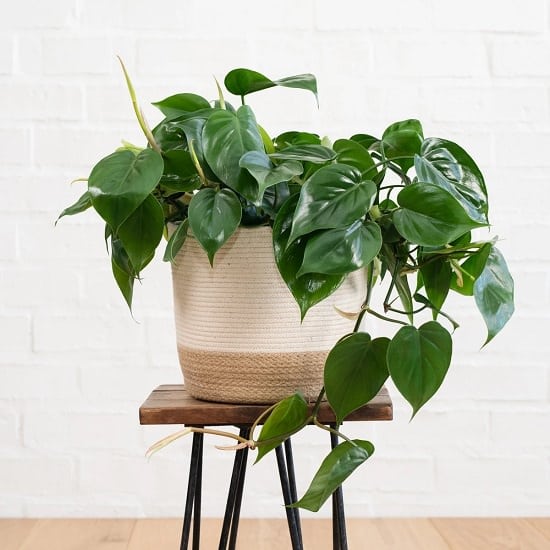
Botanical Name: Philodendron oxycardium
Also known as the sweetheart plant, heartleaf philodendron does well in low light conditions. It works perfectly in filtering formaldehyde from the air. In the tests by NASA, the plant was kept in a commercial-type greenhouse and removed 8480 Formaldehyde micrograms during a 24-hour exposure period with a total plant leaf surface area of 1696.
See more heart-leaf houseplants here
17. Dwarf Banana
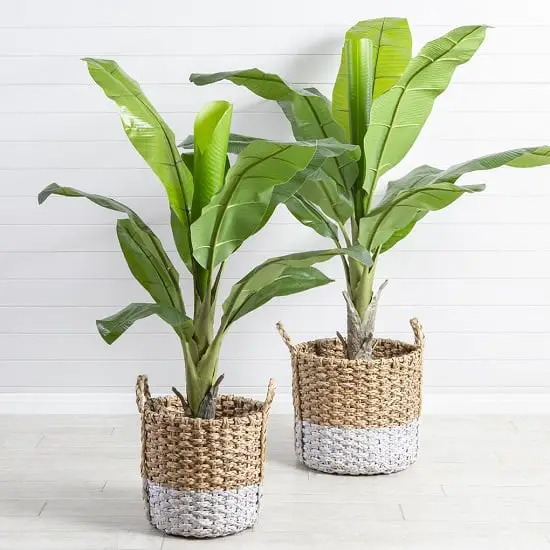
Botanical Name: Musa
The iconic banana foliage is a symbol of a tropical climate. Bring it indoors to improve the air quality of your home since this plant is ideal for purifying formaldehyde from the air. You can learn how to grow the banana plant indoors here.
Other Plants that Were the Part of the Study You Can Also Grow
Dwarf date palm, Boston fern, Kimberley queen fern, Flamingo lily, Parlour Palm, Lady Palm, Rubber plant, Dendrobium orchids, King of hearts, and Moth orchids were also part of the study.


